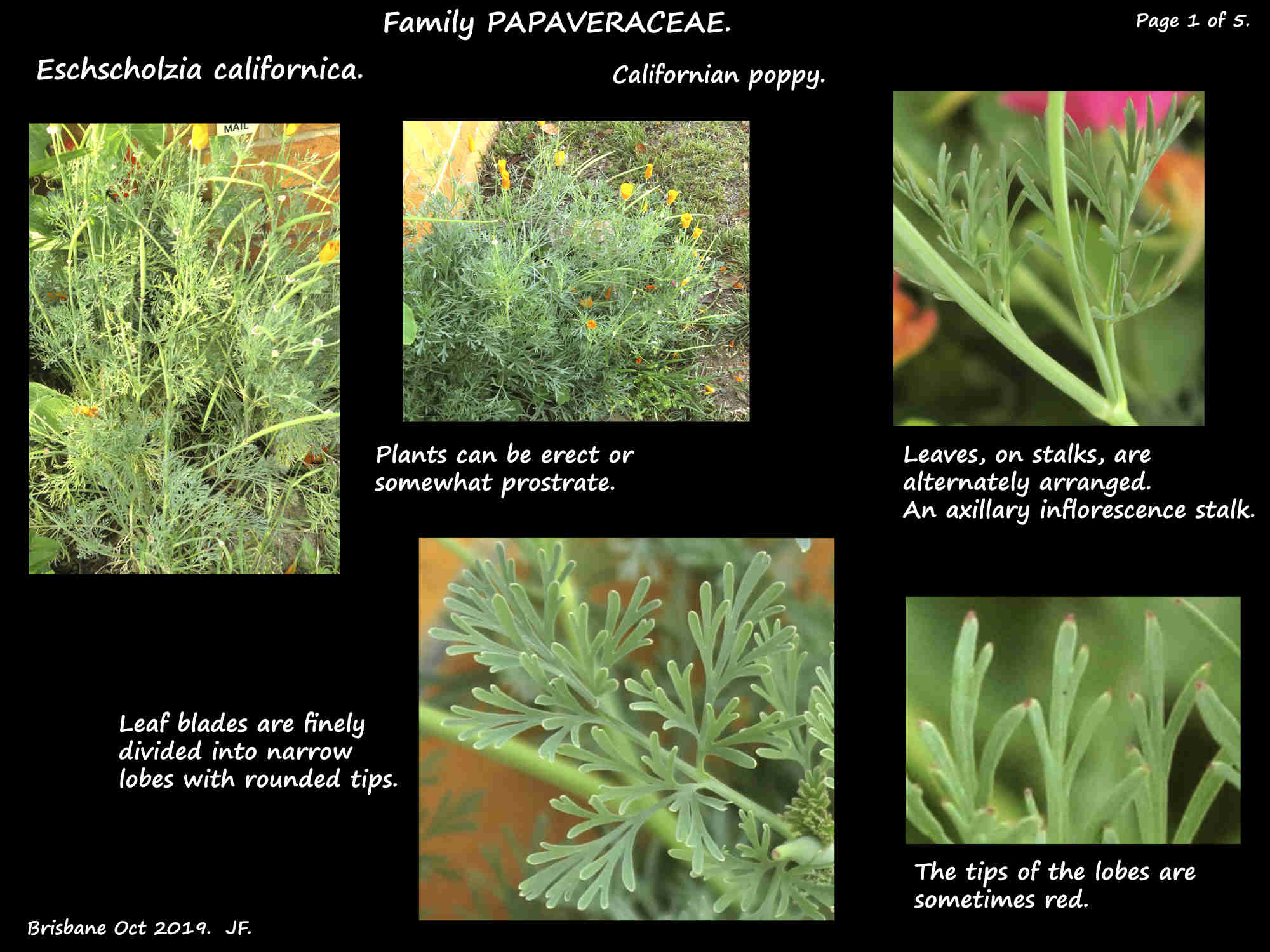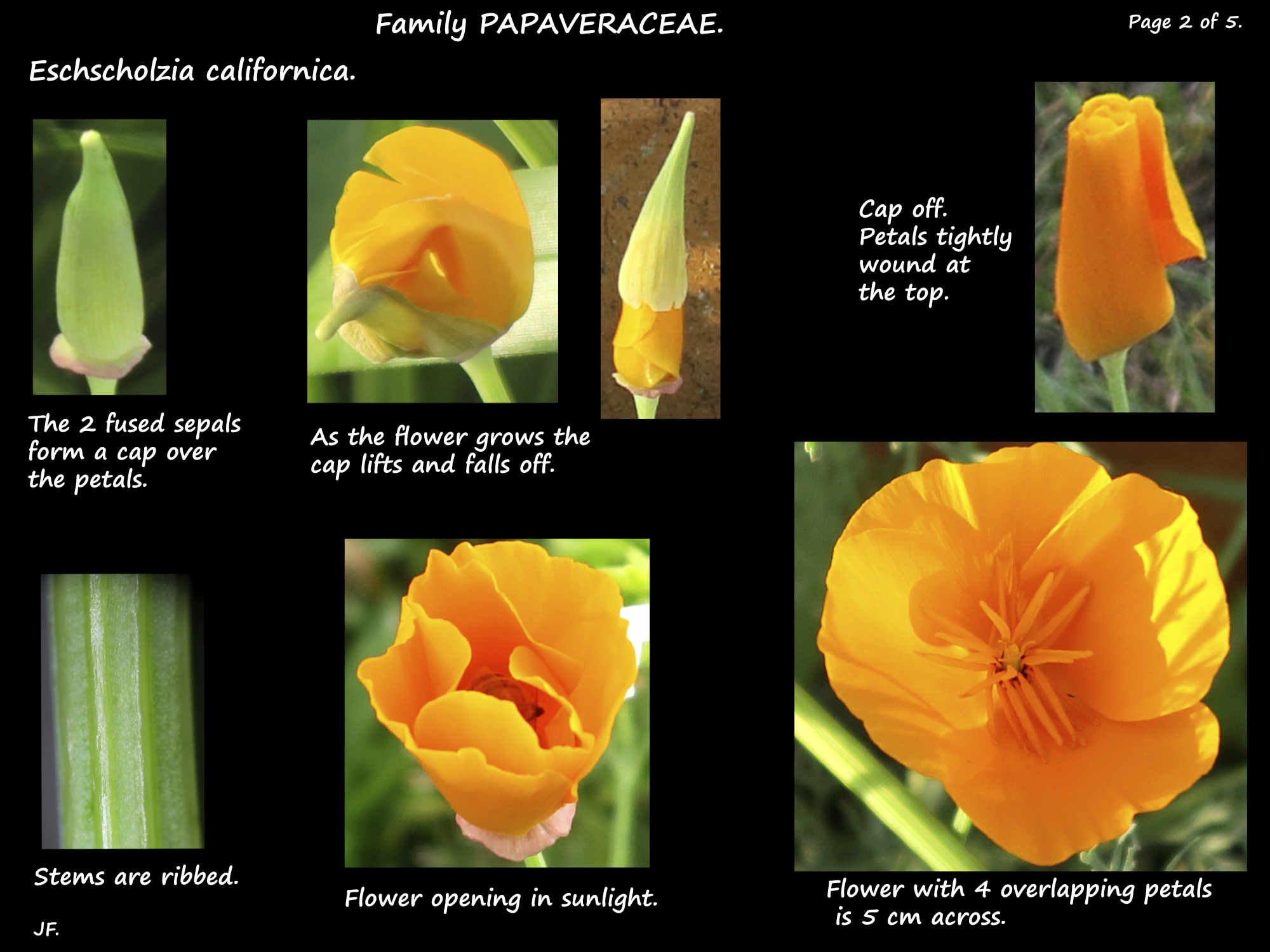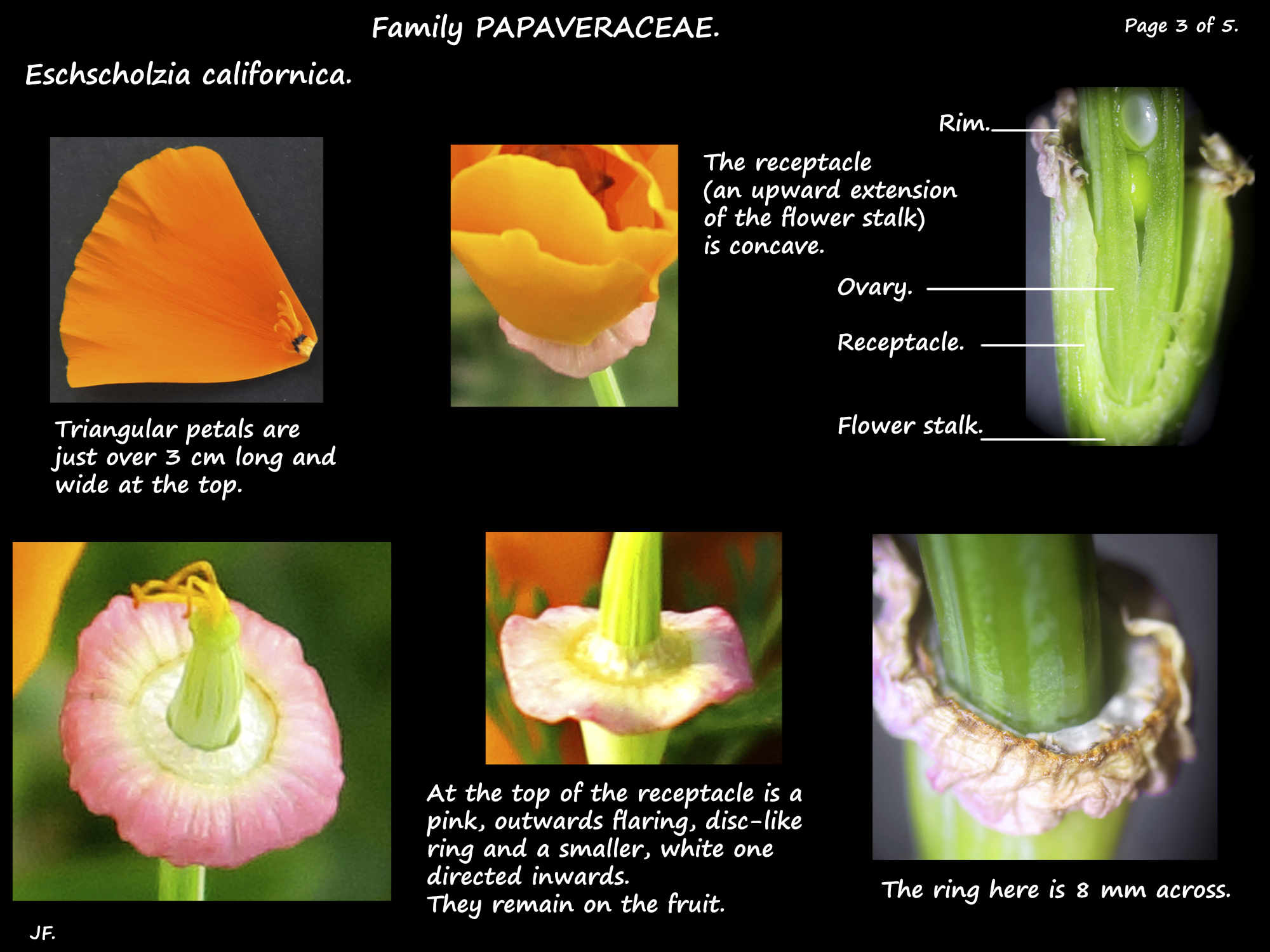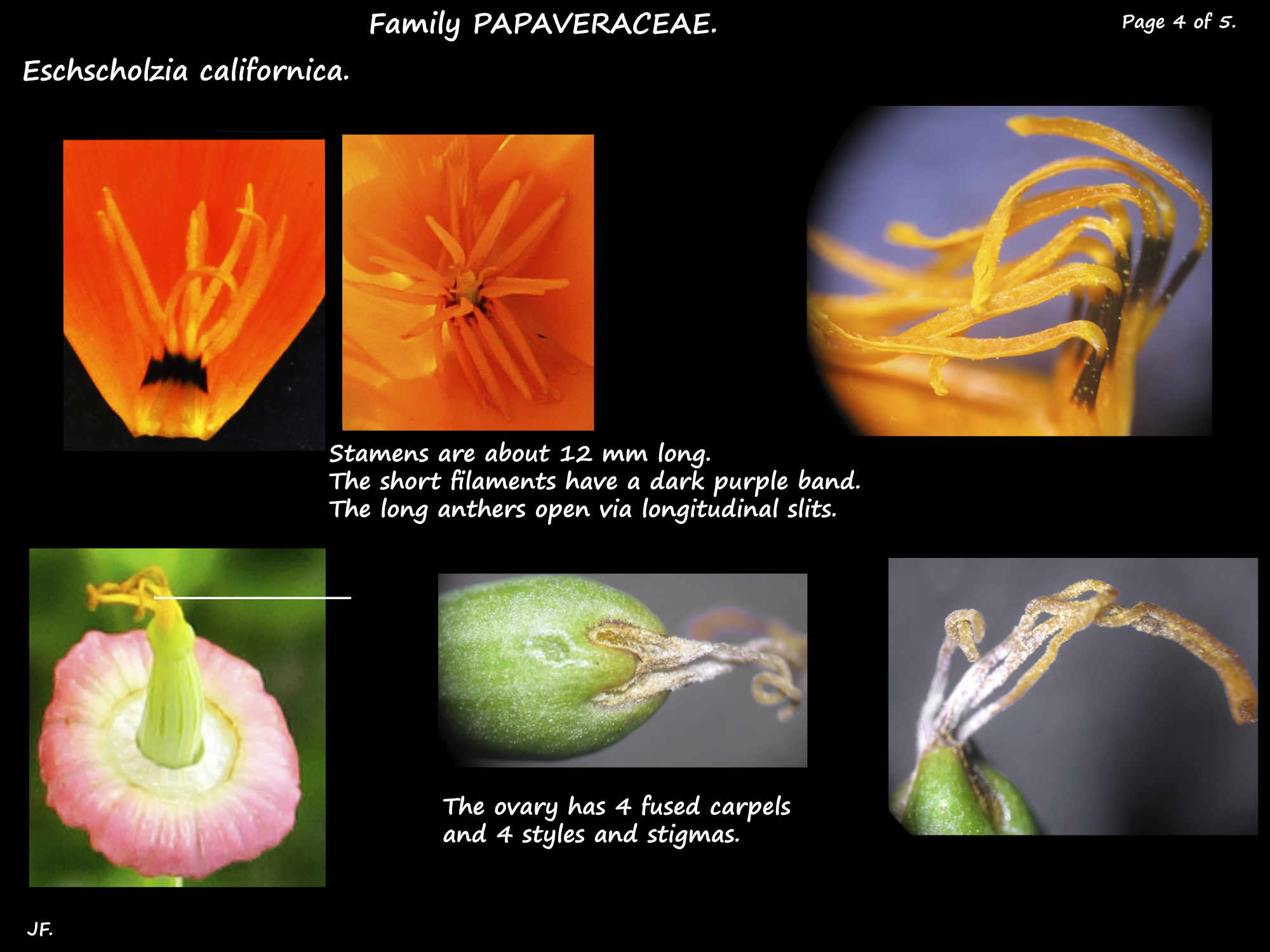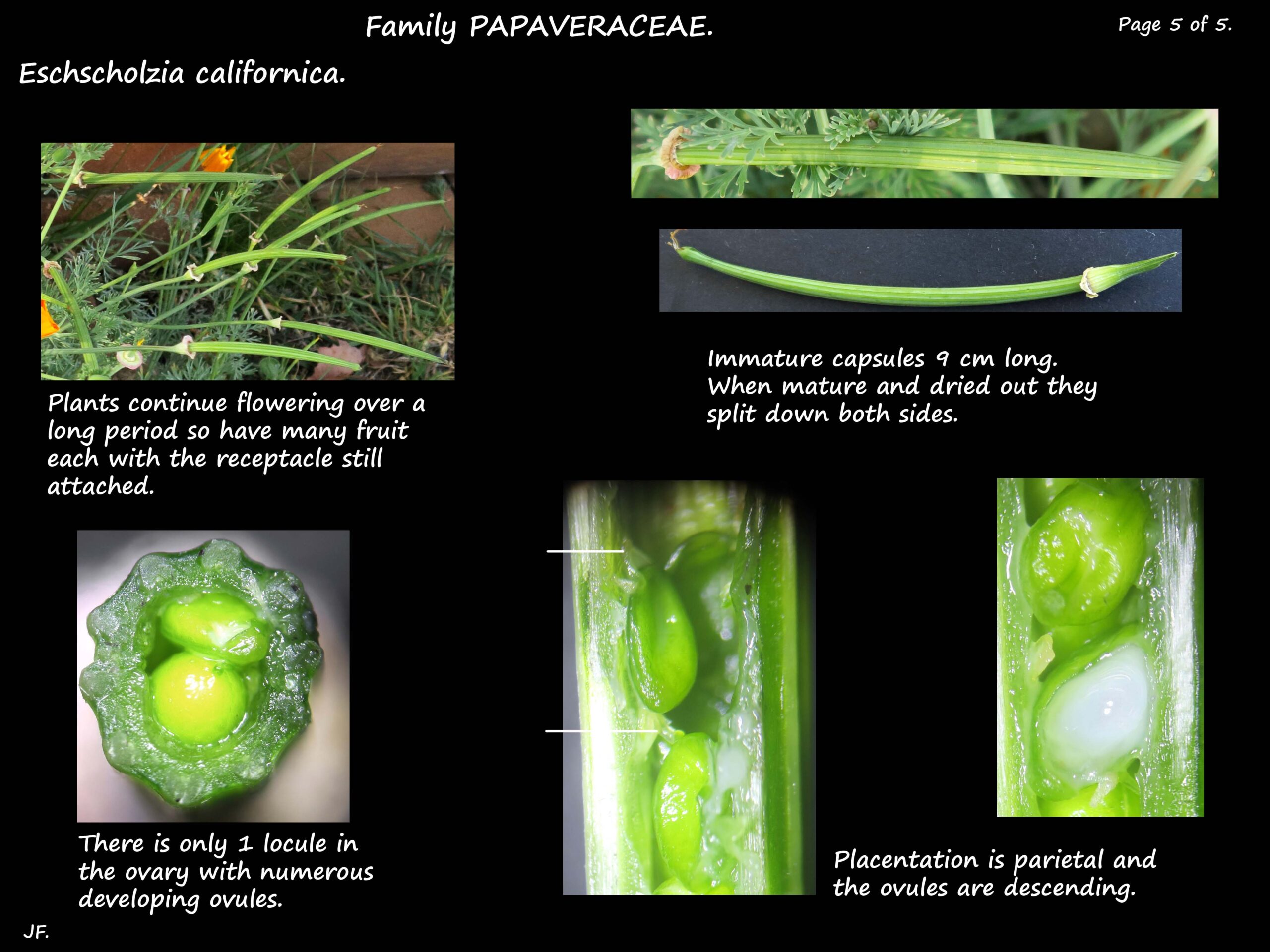Eschscholzia californica.
California poppies are in Family Papaveraceae.
They are an erect to prostrate, perennial or annual plant.
Blue-green leaves are alternately arranged and up to 60 cm long.
Leaves are divided into fine, lobed segments with blunt tips.
The tips of the lobes may be red.
Inflorescences are a solitary flower on a peduncle up to 30 cm long.
The 2 fused sepals in the calyx form a pointed, green cap over the developing petals.
The bud is wider at the base as the tips of the petals are tightly wound.
As the petals grow the calyx falls off as an intact cap.
The flower parts are on a concave receptacle.
It has a pink, disc-like rim spreading outwards and and shorter, white ring directed inwards.
In E. californica the receptacle is 0.5 to 1.5 mm across.
(Other species have rims under 0.3 mm.)
There are 4 triangular slightly overlapping satiny petals.
They are usually orange but sometimes they are yellow.
The open flower is cup-shaped and 5 – 10 cm across.
Flowers only open in sunlight, in dull weather the petals curl lengthwide each enclosing some stamens.
The petals and stamens eventually fall but the receptacle remains.
There are a dozen or more free stamens.
The superior ovary, of 4 fused carpels has one locule.
The ovules have parietal placentation.
There are 4 styles and stigmas.
The fruit are dry dehiscent capsules up to 9 cm long.
They split down both sides and open explosively.
There are numerous small dark brown or black, 2 mm seeds.
It is a highly variable species that some divide into subspecies and varieties.
Cultivars include semi-doubles and doubles, ruffled, two toned, red, white, cream, pink and mauves.
J.F.
